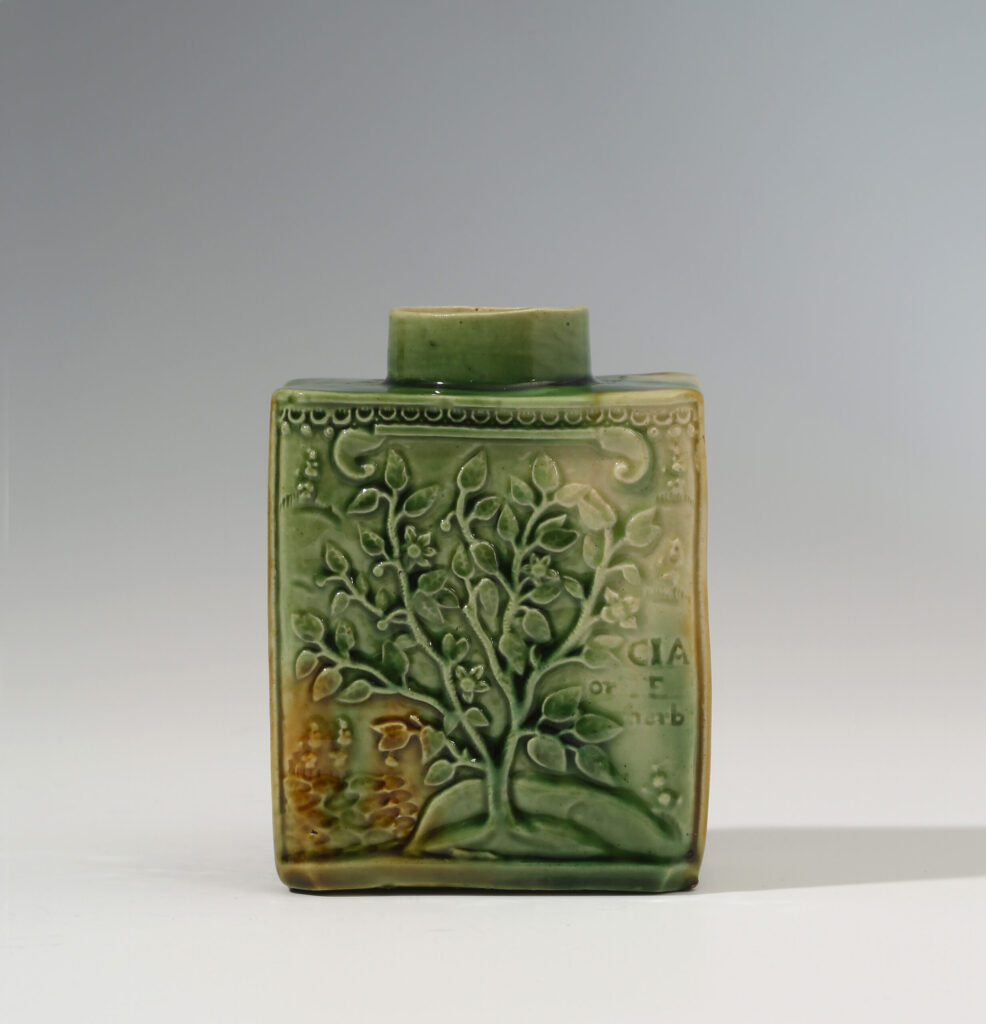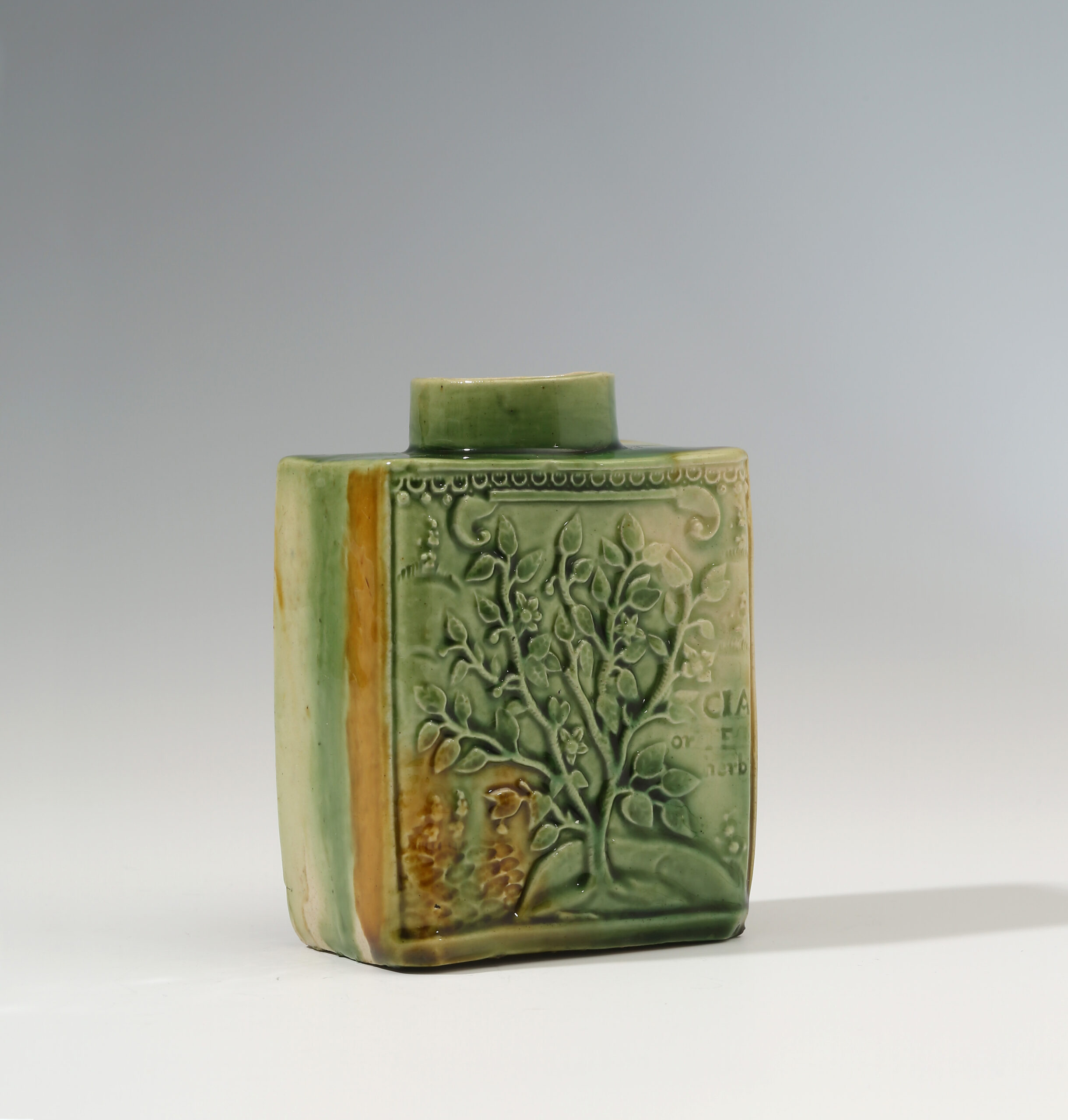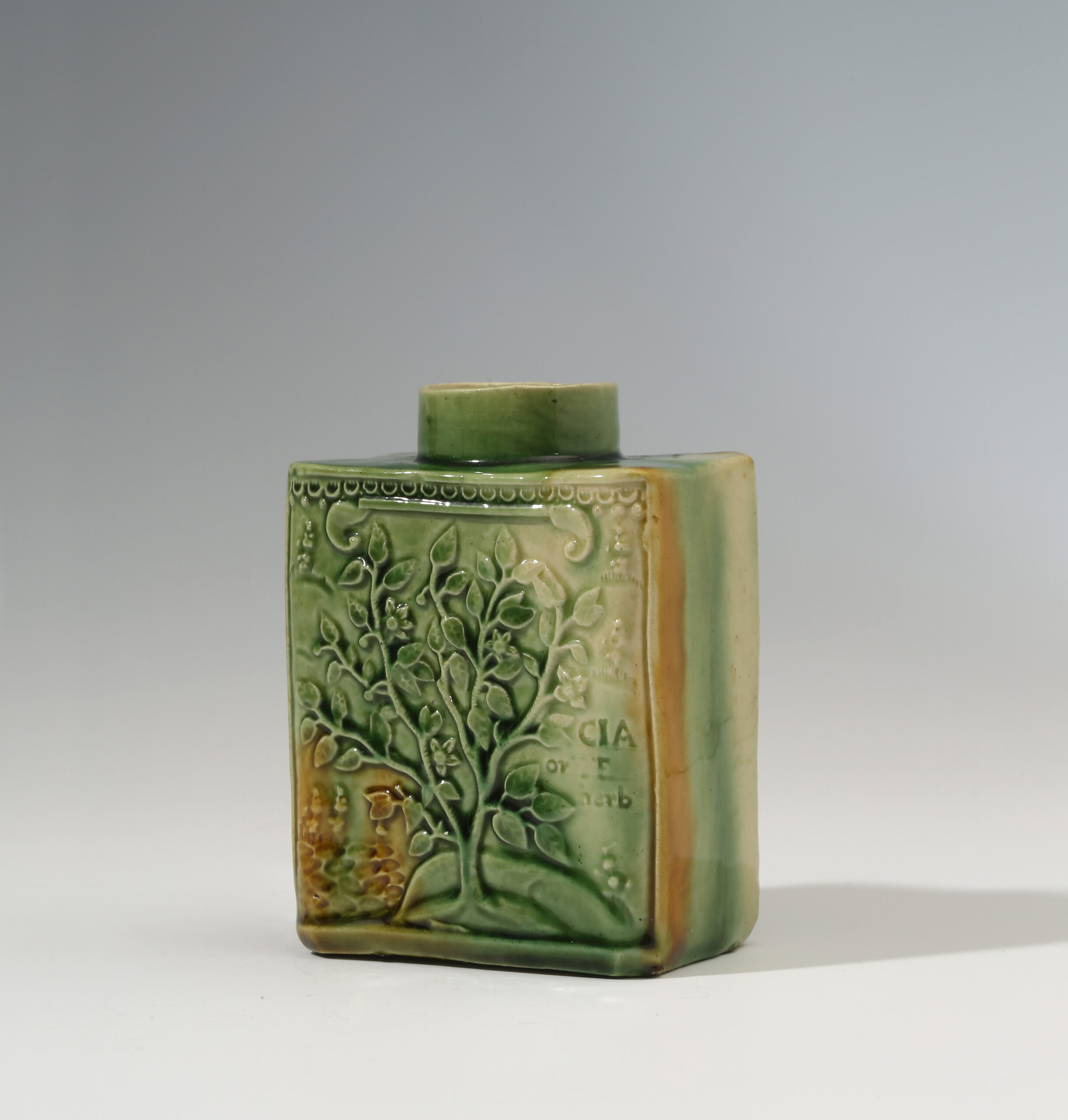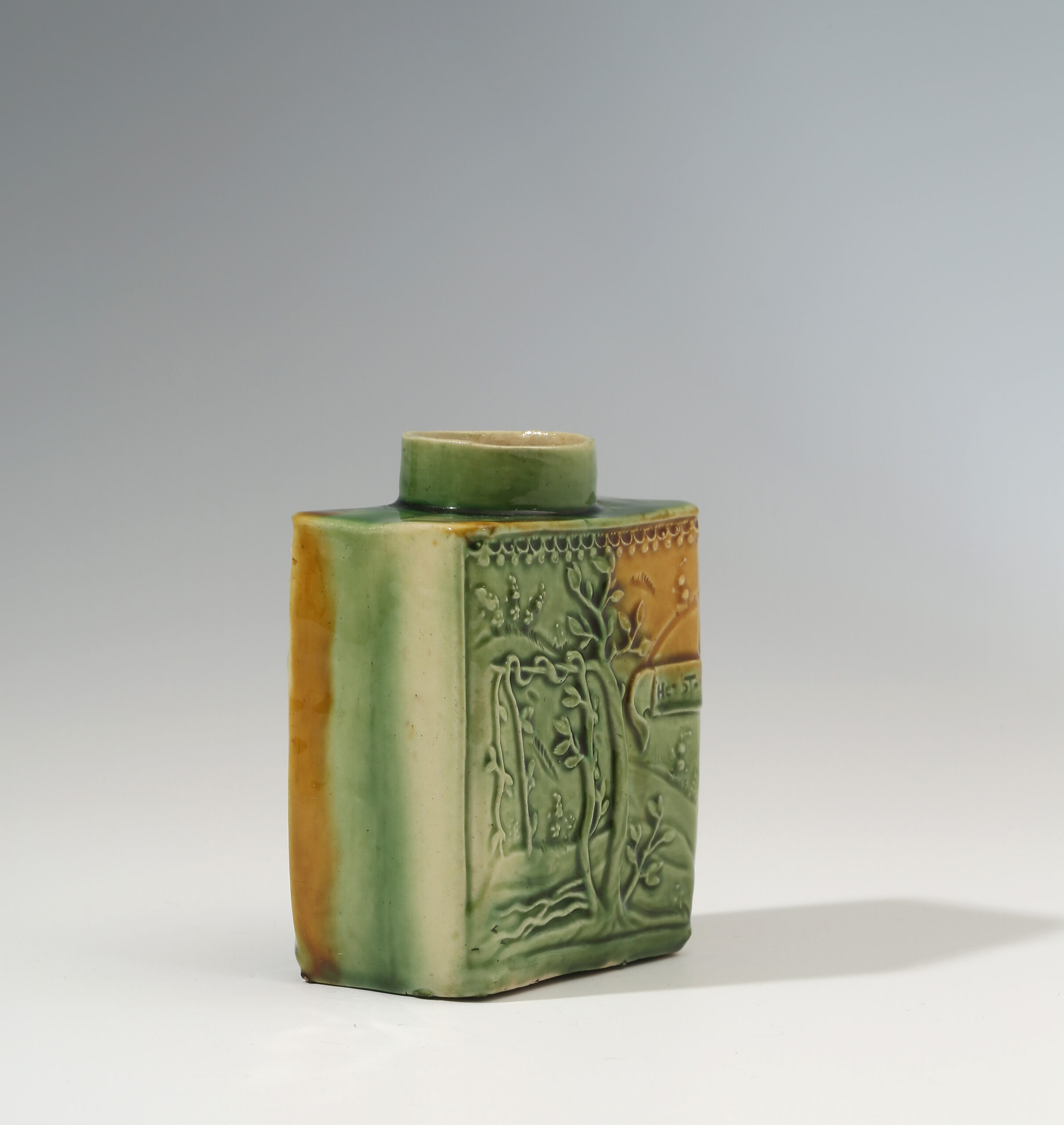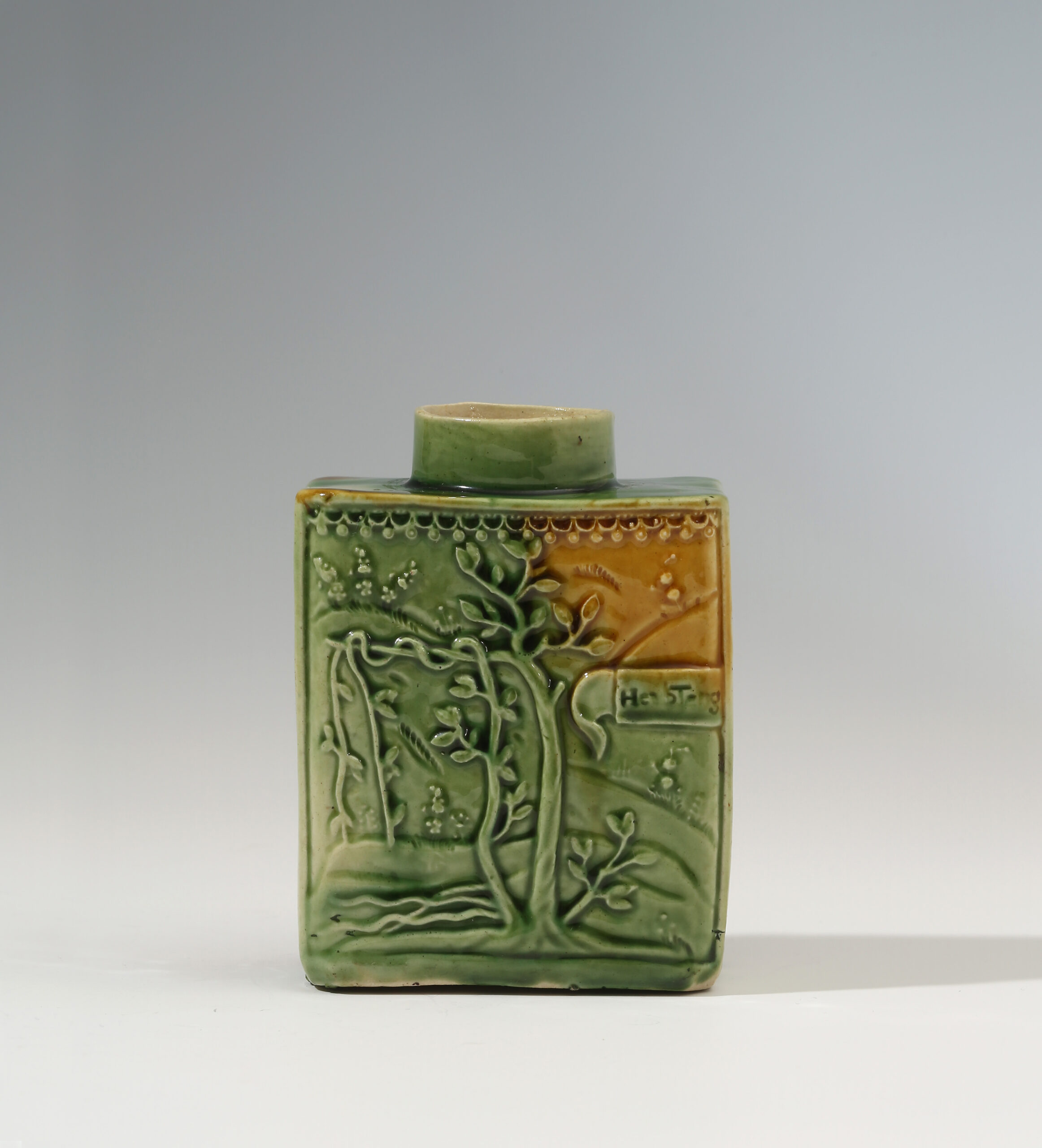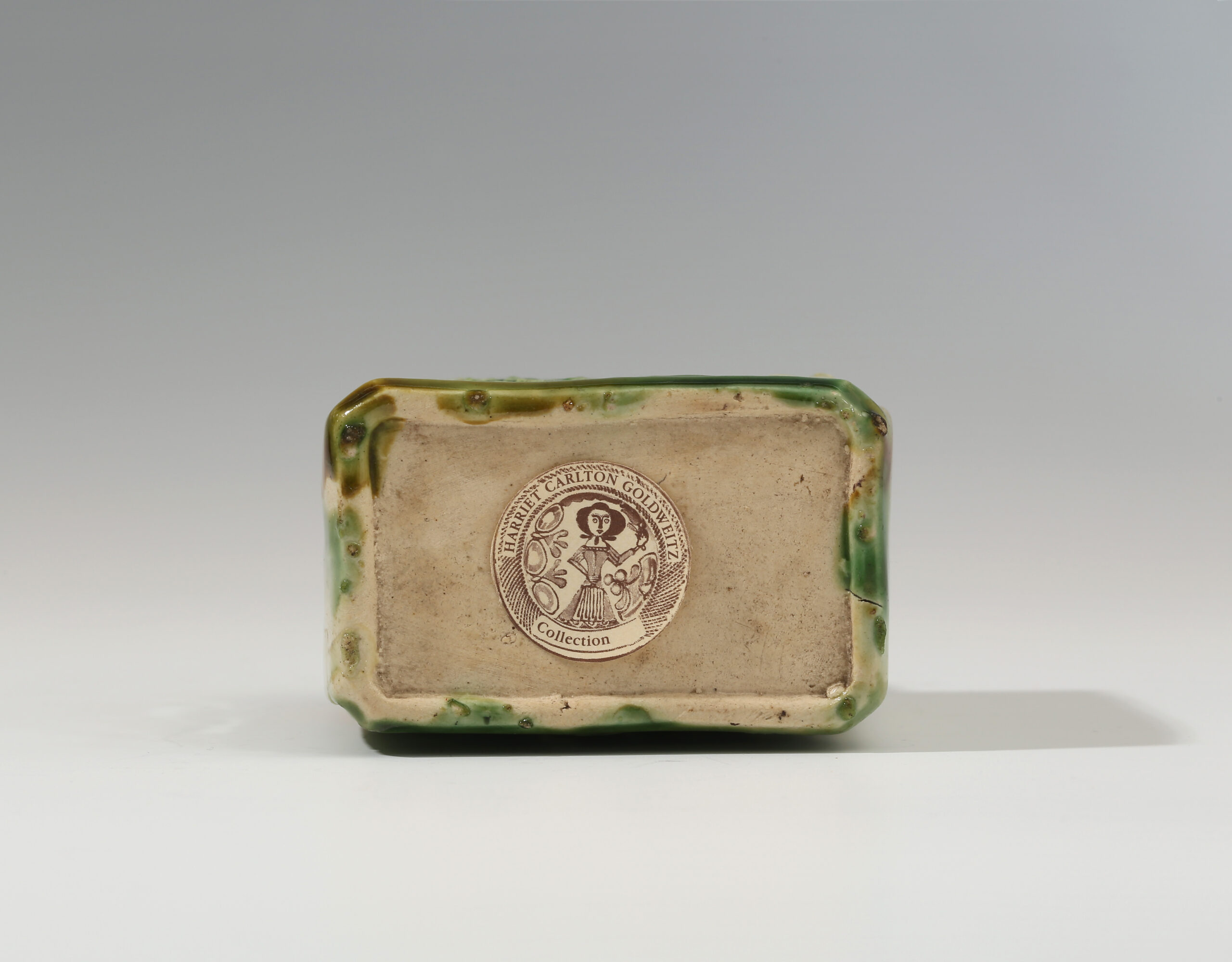One side moulded with a flowering bush titled ‘CIA or TE herb’, the other side moulded with a tree with a vine entwined around one branch, titled ‘Herb Teng’ in a ribbon.
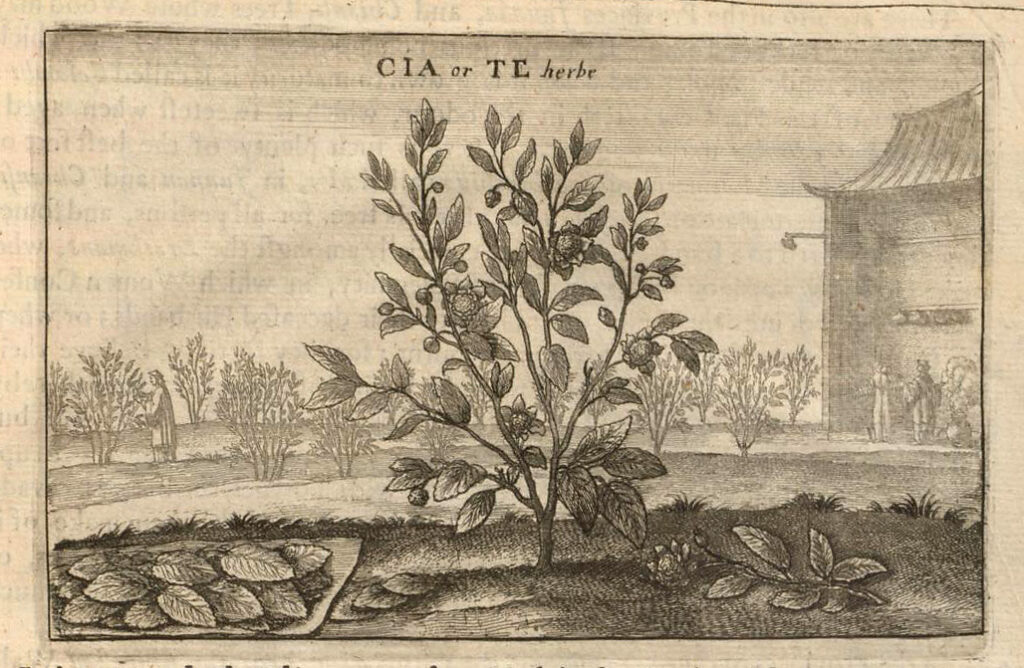
The designs on both sides appear on page 87 of Johan Nieuhof’s An Embassy from the East-India Company, of the United Provinces, to the Grand Tartar Cham or Emperour of China, published in the first English edition in 1669 by John Ogilby[i]. The first depicts tea and is titled ‘CIA or TE herbe’. Tea is described under another depiction of the plant on page 248:
“But amongst all others, China is famous for an Herb called Thea or Cha, and whereof the Natives and other Neighbouring People make their drink called Thea or Cha, taking its name from the Herb.
Of all the places in China this Herb grows fastest, and in greatest abundance in the Province of Nanking, near to the City of Lucheu: and indeed the same is only found in China, Siam, and in the Island of Japan ; ….”
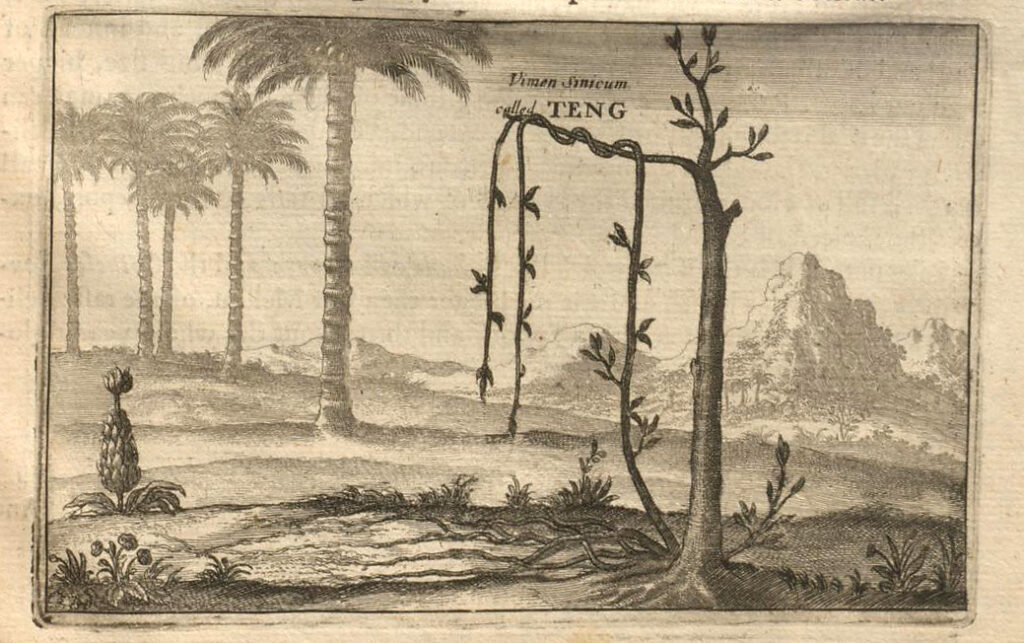
The second depicts a vine or withy and is entitled ‘Vimen Sinicum called TENG’.
“Our Atlas reporteth an admirable kind of Withy or Vine to growin the Mountains of Quantung, called by the Chineses Teng , by the Portugals the Wheel, you would believe it to be a rope wreathed by Nature, of a very great length creeping along through the Mountainous Earth; it is full of prickles, and with oblong leaves, it often spreads for the space of a furlong; there is such plenty of it in the Mountains, that the long branches being entangled within one another, make the way unpassable for the Deer; they make of it Cables and Tackle for Ships, and being wrought into fine threads, it serves to make Bee-hives, Cratches, Chairs, Pillows, Beds, and Mattresses; for no Vermin will be harboured in it; in the Summer it greatly refresheth persons wearied with heat.
A version also exists in white Staffordshire stoneware with traces of cold gilding from the Glaisher Collection, is in the Fitzwilliam Museum, no. C.563-1928.
Condition:
Cover lacking
Provenance:
Sotheby’s, London, February 19, 1991, lot 162
The Harriet Carlton Goldweitz Collection; Sotheby’s, New York, 20 January 2006, lot 142
The Stanley F. Goldfein Collection
References:
Johan Nieuhof’s work An Embassy from the East-India Company, of the United Provinces, to the Grand Tartar Cham or Emperour of China, the first English edition published in 1669 by John Ogilby
Available online: https://archive.org/details/McGillLibrary-126081-3026/page/n263/mode/1up?q=vine
Grigsby 1993
Leslie Grigsby, ‘Johan Nieuhoff’s Embassy: An Inspiration for Relief Decoration on English Stoneware and Earthenware, Antiques, New York, vol. 143, no. 1, January 1993
————————————— ————————————————————————————
[i] For a discussion of the use of Nieuhof’s engravings on English pottery see Grigsby 1993, pp. 172-183.
Price:£3,800


